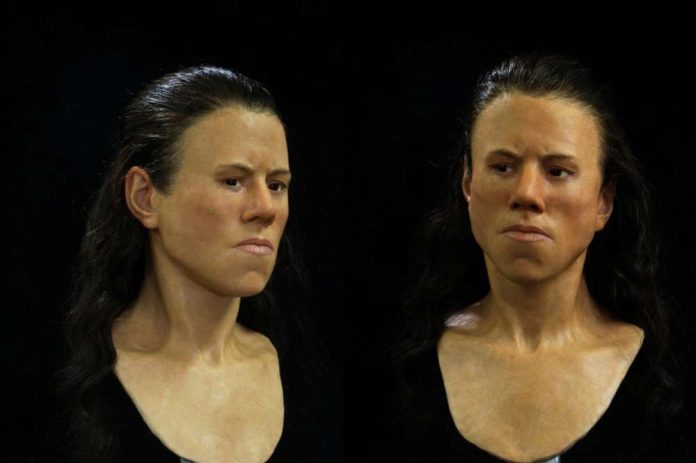Scientists have reconstructed the face of a 9,000-year-old Greek teenager, shining a new light on life in a period known as the dawn of civilization. Faith Lapidus reports.
The archaeologists who discovered the 18-year-old female in what is now modern-day Greece have named her Avgi, which translates as Dawn because she lived at the dawn of human civilization around 7,000 BCE. After living as hunter-gatherers for hundreds of thousands of years, this was a time when humans were transitioning towards organized societies thanks to technological advance and cultural changes brought about by the agricultural revolution.
A team of Greek scientists and archaeologists from the University of Athens, led by orthodontist Manolis Papagrigorakis, unveiled the new reconstruction at the Acropolis Museum in the Greek capital Athens, as reported by Greek news site Greek Reporter.
Her skull was first unearthed in 1993 at Theopetra cave, an archaeological hotspot found in the Greek town of Thessaly that contains human remains spanning across the Paleolithic, the Mesolithic, and Neolithic periods. Initial analysis of the bones suggested that the person was 15 years old when they died. However, the teeth, typically a more accurate means of dating, showed she was around 18 years old.
The researchers started by making a 3D-printed copy of the skull with the help of CT scans. Using expert knowledge from a range of scientific backgrounds, they then created estimations of the thickness of the flesh at particular anatomical points of the face. This information was then used to piece together the appearance of the 18-year-old woman. Other features, such as the hair color and eye color, were not possible to work out so are inferred by general population traits of the time and region.
“Avgi has very unique, not especially female, skull, and features,” said Oscar Nilsson, a Swedish archaeologist and sculptor who worked on the project, according to National Geographic.
“Having reconstructed a lot of Stone Age women and men, I think some facial features seem to have disappeared or ‘smoothed out’ with time. In general, we look less masculine, both men and women, today.”
In 2011, the same team also reconstructed the face of Myrtis, an 11-year-old Athenian girl who lived around 430 BCE. Analysis of this young girl’s remains indicated that she died of typhoid fever during the Plague of Athens of that time.
“We only know that she lived around 430 BC, when many of the values that sustain contemporary civilization were established,” Papagrigorakis told Nature in 2011. “She probably witnessed the building of the Parthenon on the Acropolis in Athens.”
















9000 years and 430 bc?